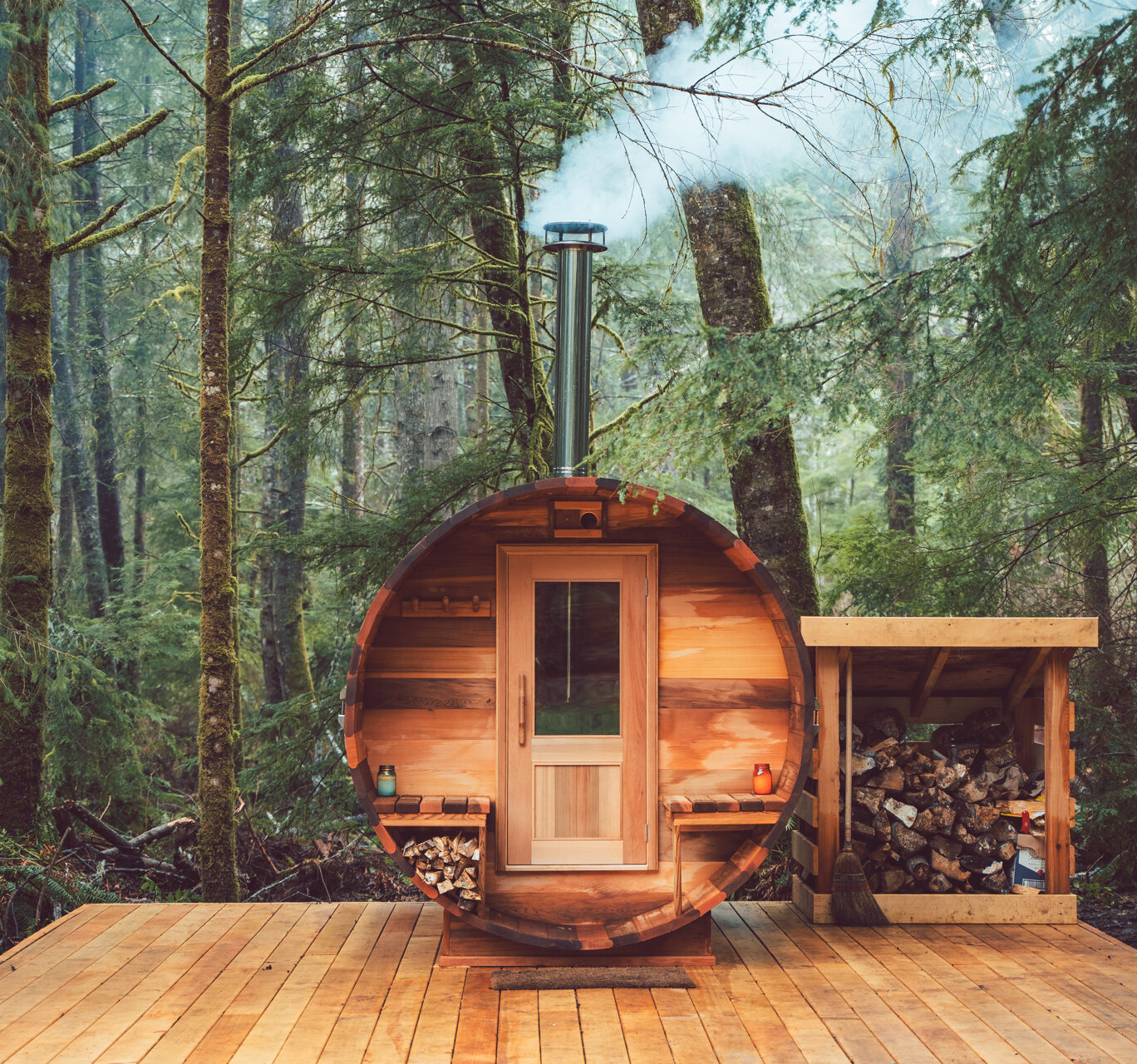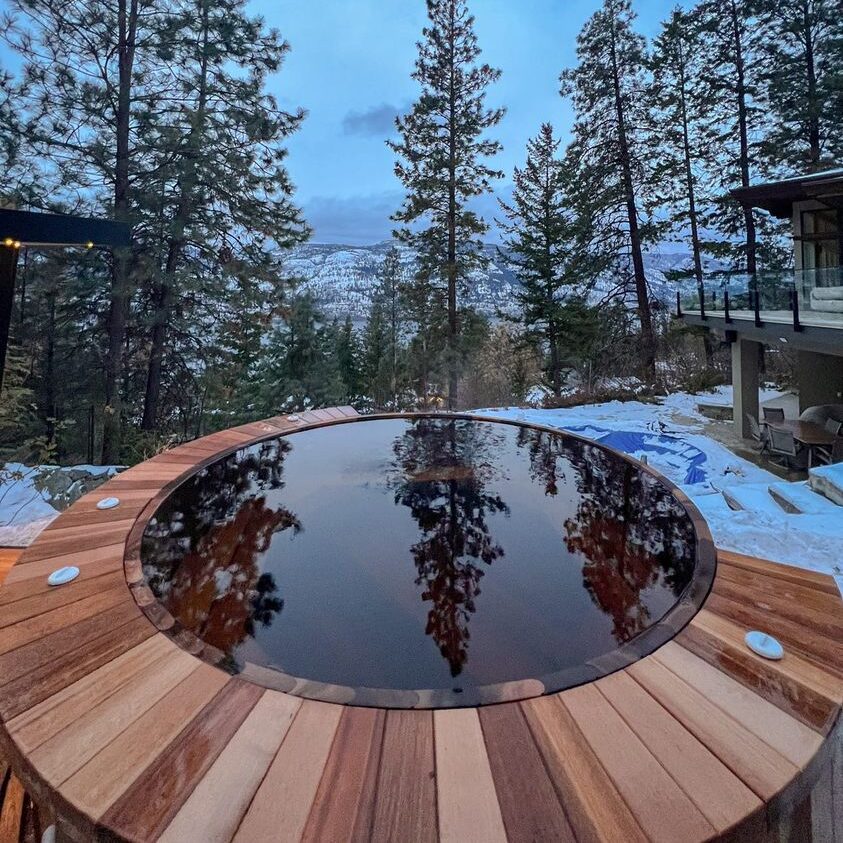The ritual of moving your body through a cycle of heat, cold and rest can have transformative benefits for the body and mind. Try it once and the feeling you’ll be left with will have you coming back for more. Make it a part of your daily life and you stand to see incredible health benefits.
Hot cold contrast therapy, the Nordic Cycle, thermocycling, hot-cold cycling, hydrotherapy… whatever you want to call it, there’s a reason it’s on the rise. Cultures around the world have developed techniques over thousands of years using the power of heat and cold, and in recent years the health benefits have been well documented through science.
We’re diving into the research, history and modern protocols to explore why this is so much more than a passing trend. Plus, we’ll share how you can create a therapeutic spa circuit at home to bring all the benefits into your daily life.


History of Thermal Therapies
Trendy as it may seem today, the tradition of using heat and cold therapeutically has deep roots around the globe.
In Scandinavian countries saunas have been traced back for thousands of years, written records of cold therapies have been discovered in ancient Egyptian texts, Indigenous peoples across the Americas have traditionally used sweat lodges for spiritual and physical benefit, and Japanese bathing culture has made hot soaking and cold therapy integral to daily life for centuries. These are just a few examples of the many unique cultural rituals using the power of water, fire, steam, smoke and ice.
Today many different hot and cold therapy techniques draw on traditional methods and modern science to provide a wide range of benefits.
Health Benefits of Hot and Cold Therapies
There’s a reason rituals of using heat and cold have stood the test of time: they make you feel good, promote healing in the body and boast a wide range of potential short and long-term health benefits.
Research has shown that immersion in cold water can reduce muscle soreness and speed recovery. It has also been demonstrated to provide mental health benefits, with fMRI studies showing an increase in positive affect and promotion of interactions between large-scale brain networks. In other words, it makes your body and mind feel good and improves brain function!
Blood vessels that are submerged in cold water will constrict, sending blood to major organs like the heart, brain and lungs, and when you emerge from the water, blood is pumped back into the tissues. This process can help reduce pain and inflammation and strengthen your heart and blood vessels over time.
In the epicentre of sauna culture, the University of Eastern Finland has conducted extensive research on the immediate and long-term effects of sauna bathing. A 30-minute sauna session can reduce blood pressure and, increase heart rate similar to medium-intensity exercise. Regular sauna bathing has been associated with a reduced risk of heart disease, hypertension, Alzheimer’s disease and dementia, and respiratory diseases.
Both hot and cold therapies can have benefits alone, but the combination of the two may be even more powerful. Though studied less extensively than heat or cold therapy alone, research on alternating heat and cold shows promising results, with potential benefits ranging from improved cardiovascular health to decreased risk of brain disease. Anecdotally and in scientific studies, athletes report reduced perception of muscle fatigue using contrast water therapy after sports, suggesting the potential to enhance athletic performance and recovery.
Though difficult to measure objectively, the psychological and emotional benefits of pushing your body and developing a tolerance for stressful environments are major motivators for hot/cold cycling enthusiasts.


How to Create a Hot and Cold Therapy Circuit at Home
Excited about the upsides of hot-cold cycling and want to try it for yourself? With the right equipment, you can create a spa-like ritual at home.
Your cycle can be as basic as alternating your shower temperature from hot to cold, but a full-body immersion is ideal. If you want to make hot-cold cycling part of your daily routine, investing in the right tools for the job can be well worth it.
Saunas, hot tubs, soaker tubs and traditional bathtubs are finding their way into more and more backyard landscape designs. Whether you choose to use them therapeutically or recreationally, you’re bound to get tremendous value from your investment.
Depending on where you live, you may be able to take advantage of the environment around you for your cold exposure. A snowy bank, frigid lake or ocean on your doorstep is tough to beat. If that’s not available, you can create your cold plunge at home with a soaker tub and cooling system to maintain your temperature at a safe and therapeutic level.
Once you’ve got your hot and cold source dialled in, you can start gathering accessories to add to the experience. Some useful items include:
- A thermometer
- A timer
- A cozy towel
- A robe and slippers
- Essential oils like eucalyptus and lavender for a spa-like effect
Contrast Therapy Protocol
We asked Andy Galpin, Professor of Kinesiology at California State University, Fullerton to share a contrast therapy protocol that you can use at home. To receive the benefits of heat and cold, follow the following method:
- Cold: 3-5 minutes
- Heat: 10-20 minutes
- If time allows, repeat for 3 rounds
Andy suggests that instead of thinking about contrast therapy as a magical cure, think of it as an excellent and highly effective tool. We know that heat and cold have physiological benefits, and if contrast therapy is something that you stick with, it’s a win. Don’t have time for three rounds? Just one round is far better than skipping it altogether.
Hot-Cold Cycling Safety
Before you embark on your contrast therapy journey, it’s recommended to consult a medical professional, particularly if you have a heart condition or if you’re taking medications.
To receive the full health benefits, it’s important to understand the risks and avoid pushing your body too far. While this isn’t a substitute for medical advice, these tips can help keep you safe:
- Start slow and build up your tolerance. Begin with short cycles in milder temperatures and work your way up to more extended periods of immersion in the heat or cold, or gradually more extreme temperatures
- Be aware of the signs of hypothermia and keep in mind that the risks don’t end when you get out of cold water, especially if you’re in a cold climate. Get dry and warm as quickly as possible after your cycle is complete
- Have a buddy. Not only is contrast therapy more fun with friends, but it’s also safest to have someone there in case you begin to feel symptoms like dizziness, confusion or lightheadedness, which could be signs of overheating or hypothermia
- Stay hydrated. Your body needs plenty of water to function at its best, and this is particularly important when exposing yourself to heat
- Keep an eye on the temperature. Have a thermometer handy to ensure you’re in a safe range. A timer can be helpful to avoid overdoing it as well
Ready to begin building your own hot-cold therapy spa? We’re here to help. Get in touch to learn about your options and choose the best product for your home.


